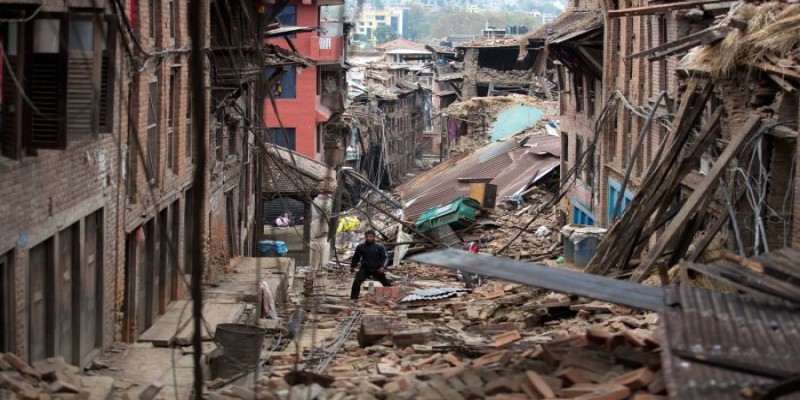
Media Monitoring of #NepalEarthquake - May 18
Rebuilding with Resilience has been the order of the day. With the death toll almost reaching 9000, there is increased focus on rebuilding efforts and initiations have been taken – from non-resident Nepalis to political parties as they have announced their rebuilding plans in the affected districts. Some interesting experiences have also been documented such as that of a survivor who was buried under a debris for 82 hours and a resident of Mangal Bazaar, an old town of Lalitpur who vividly explains how his small moments of happiness were lost in the earthquake devastation. More highlights from the media coverage:
Aid Added
It is great news that 26% Britons have donated to Disaster Emergency Committee Nepal Earthquake Appeal in the two weeks since it was launched based on research carried out by Charities Aid Foundation, Charity Digital News reports. It is a great gesture from the people of Britain to shower their love and affection to the earthquake affected. Similarly, a political party from India, CPIM Maharastra has also announced on Twitter that it is donating 1 million rupees to the quake affected for relief and rehabilitation work. Despite the aid flowing ekantipur reports that the donors and Nepali officials are divided over who lead the rebuilding efforts. While the government is in favour of a separate entity for quick decision making and procurement, World Bank, a major donor views that establishing such an entity could “waste time and energy early in the recovery period; create competition between itself and the line ministries for both budget and experts; blur mandates and responsibilities and slow down decision-making; weaken the capacity of existing ministries by taking away their best officers; and potentially result in a permanent agency that will struggle to find a new mandate once the post-earthquake emergency has ended.”
Government pulls up its socks
It seems that the government is making good early steps towards rebuilding efforts. President Dr. Ram Baran Yadav has himself shown the way providing counselling to the quake affected at Tribhuvan University Teaching Hospital. Prime Minister Sushil Koirala is travelling to India next month to meet his counterpart Narendra Modi and discuss with him regarding long term plan for reconstruction and rehabilitation, Deccan Herald reports. It has also put a restriction on construction of new buildings to two storeys until it comes up with a new building code. According to Setopati, cabinet has also assigned districts to ministers to lead and supervise relief and rehabilitation works in the affected areas. Government team along with UNDP team has also assessed the extent of damage at glacial lake in Tsho Rolpa region in order to apply any precautionary measures, if required.
Relief and Rebuilding Efforts
WFP and UNHRD have teamed up for their relief efforts as they have contributed in constructing new hospital in Kathmandu for emergency treatment. Similarly, UNHCR is also distributing solar lamps to the quake displaced.
With regards to the rebuilding efforts, Canada has extended its helping hand of support to the quake affected as it has shown willingness for the resettlement of the affected as per the guideline and need of Nepal government, Republica reports. Similarly, UCPN (Maoist) under the leadership of Chairperson Prachanda has also announced of 15-day rebuilding campaign in Sindhupalchowk – the most affected district. Some non-resident Nepalis have also come forward in terms of relief aids in Dolakha and Solukhumbu and are developing their plans to rebuild Gorkha – the epicenter of the earthquake.
Reiterating Resilience
An individual on Twitter applauds the efforts made by Nepal Army as he says, “Big Salute to Nepal Army working relentlessly in rescue and now in relief and rebuilding efforts.” Pahilopostcovers an awfully fearsome experience of a survivor buried under debris for 82 hours and his victory over death. Normalcy has also been focused by media in order to secure livelihood of the survivors as an article mentions the need for subsistence farmers to get back to their field to manage their food and living. As a cross cutting issue, organizations such as The Gender Agency have focused on gendered assessment of the impact upon women due to the earthquake and thus a guideline has been developed on Rapid Gender Analysis as part of Specific Sector Gendered Assessment documenting the general information (sex and age; impact of emergency; vulnerabilities; capacities and coping mechanisms; gender roles and responsibilities; access and participation). Through the guideline, specific information related to Shelter, Non Food Items, Water-Sanitation-Hygiene, Health, Food Security, Livelihoods, Nutrition, Early Recovery, Education, Protection and Central Coordinating Mechanism can be received.
Nepali Times covers interesting stories of bravery and resilience of the quake affected and struggling to overcome the pain with the message, “We will bend but we will not break”. Let’s overcome this tragedy with that very spirit!






Comments(0)
No comments found.